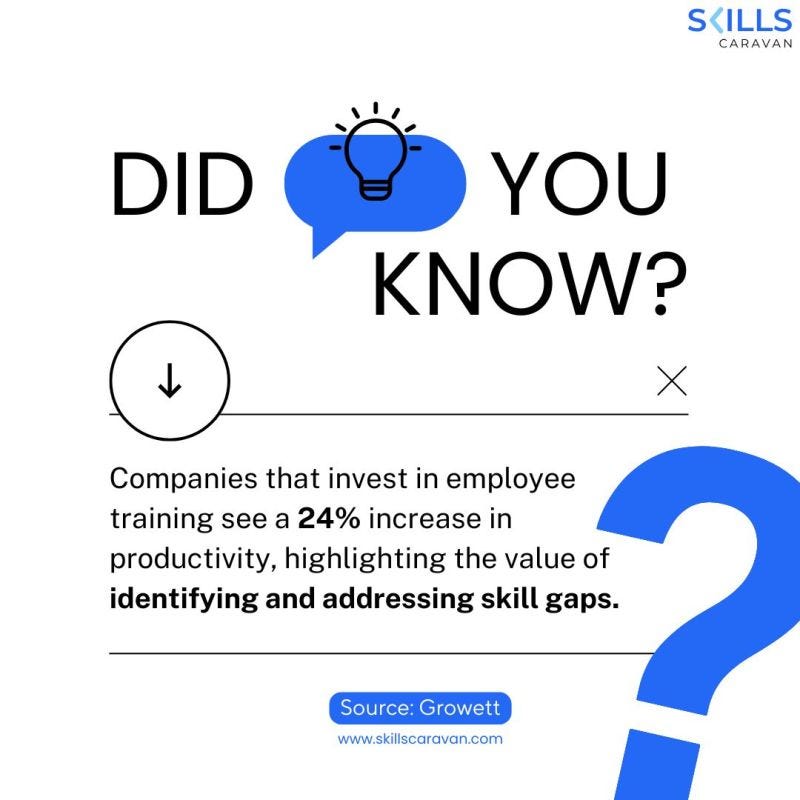Why Should Companies Invest in Employee Training and Development Today?
In a world where technology evolves rapidly and workplace dynamics shift constantly, the importance of Employee Training and Development has never been greater. Companies that prioritize this area are not just investing in their workforce — they’re investing in their future. From improving performance to retaining top talent, the benefits are wide-ranging and deeply impactful. So, why should your organization invest in Employee Training and Development today? Let’s explore.

1. Enhancing Employee Performance and Productivity
One of the most immediate benefits of Employee Training and Development is a boost in performance. Training helps employees gain the skills and knowledge required to perform their job efficiently. Whether it’s mastering a new software, understanding compliance protocols, or learning better customer service techniques, trained employees can handle their responsibilities more effectively.
Improved skills directly lead to higher productivity, reduced errors, and better output. This not only contributes to company goals but also creates a sense of achievement among employees.
2. Addressing Skill Gaps Proactively
The skills required today are not the same as those needed five years ago — and they’ll keep changing. Organizations often struggle with skill gaps, especially when roles become more complex due to digital transformation or market evolution. Strategic Employee Training and Development allows companies to address these gaps proactively.
Regular training sessions, upskilling, and reskilling programs ensure your workforce remains competent, agile, and future-ready.
3. Boosting Employee Engagement and Job Satisfaction
Employees who feel that their employers invest in their growth are more likely to stay engaged and satisfied in their roles. Training opportunities show that the organization values its people and is willing to invest in their career paths. This sense of value can significantly increase employee loyalty and morale.
Engaged employees also tend to contribute more creatively, work collaboratively, and stay committed to organizational goals — directly impacting the bottom line.
4. Improving Retention and Reducing Turnover Costs
Hiring and onboarding new employees is expensive and time-consuming. Investing in Employee Training and Development helps reduce turnover by providing growth opportunities for current staff. When employees see a clear path for progression and development, they’re more likely to stay with the company.
According to various studies, companies that offer training and career development programs report higher retention rates than those that don’t. In industries with high attrition, training is not just a benefit — it’s a necessity.
5. Driving Innovation and Competitive Advantage
Companies that prioritize continuous learning are better positioned to innovate. Employees who are trained regularly are more likely to bring fresh ideas, question outdated methods, and suggest improvements. A culture of learning leads to a culture of innovation.
In today’s competitive landscape, the ability to adapt quickly and think creatively can be the difference between staying relevant and becoming obsolete. Employee Training and Development becomes a key tool for sustaining competitive advantage.
6. Ensuring Compliance and Reducing Risk
Many industries are subject to ever-evolving laws and regulations. Compliance training helps employees understand legal frameworks, safety standards, and ethical practices. Whether it’s data privacy laws, workplace safety protocols, or anti-harassment policies, Employee Training and Development ensures your company stays compliant and avoids legal troubles.
By educating your staff, you reduce risks and reinforce a culture of responsibility and accountability.
7. Building a Strong Employer Brand
In today’s candidate-driven job market, employer branding plays a critical role in attracting top talent. Companies known for offering robust Employee Training and Development programs are more appealing to job seekers. It sends a message that the organization is forward-thinking, people-oriented, and committed to excellence.
A strong employer brand not only helps with recruitment but also improves internal pride and loyalty, helping you build a culture of excellence.
8. Supporting Leadership Development and Succession Planning
Every organization needs a leadership pipeline. Training programs geared toward leadership development help identify high-potential employees and prepare them for future managerial or executive roles.
Succession planning becomes more strategic when you invest in Employee Training and Development early. This ensures business continuity and avoids leadership vacuums that can disrupt operations.
9. Promoting Collaboration and Cross-Functional Understanding
Training is not just about individual skill development — it can also be team-focused. Cross-functional training helps employees understand how different departments operate and how their roles contribute to larger organizational goals.
When employees are trained together, they tend to collaborate better, resolve conflicts more effectively, and build stronger interpersonal relationships — all of which are crucial for business success.
10. Aligning Employee Growth with Business Goals
The most effective training programs align employee development with the company’s strategic goals. Whether the goal is digital transformation, market expansion, or customer-centric innovation, Employee Training and Development serves as the bridge between vision and execution.
By designing training programs that are in sync with business needs, companies can ensure that employee growth contributes directly to organizational success.
Final Thoughts
Employee Training and Development is no longer a luxury — it’s a strategic necessity. In today’s fast-paced and complex business environment, continuous learning is the fuel that drives performance, innovation, and growth. Organizations that prioritize training empower their people to grow, adapt, and thrive.
By investing in training today, you’re not only equipping your workforce for current challenges — you’re future-proofing your business.

Comments
Post a Comment